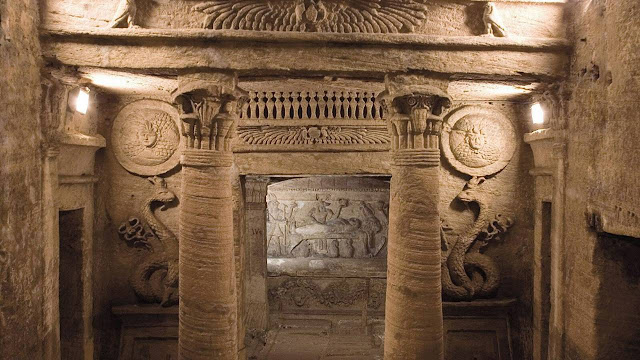Victoria Falls, or Mosi-oa-Tunya
is a waterfall in southern Africa on the Zambezi River at the border of Zambia
and Zimbabwe. CNN has been described as one of the Seven Natural Wonders of the
world. The Victoria Falls also known as “The Smoke That Thunders” continues in
common usage as well. The World Heritage List officially recognizes both names.
The legendary waterfall is among the most impressive & awe-inspiring to be
found anywhere on the planet earth. David Livingstone, the Scottish missionary
and explorer, is believed to have been the first European to view Victoria
Falls on 16 November 1855, named his discovery in honor of Queen Victoria of
Britain. The Victoria Falls generates mists sustain a rain forest-like
ecosystem nearby the falls and on the opposite cliff that faces them like a
dried-up mirror image, thick with mahogany, fig, palm, and other species of
vegetation. The whole volume of the Zambezi River pours through the as much as
six Gorge's zigzagging series of gorges designated by the order in which the
river reaches them. Moreover, the geological history of Victoria Falls can be
seen in the form of the gorges below the falls. The basalt plateau over which
the Upper Zambezi flows has several large cracks filled with weaker sandstone.
In the area of the present fall the largest cracks run unevenly east to west,
with smaller north-south cracks connecting them. Thus, more than 100,000 years,
the falls have been receding upstream through the Batoka Gorges, eroding the
sandstone-filled cracks to form the gorges.
The Zambezi River is more than 2
km wide when it cascades over the lip of a large basalt plateau and plunges as
much as 354 feet. The flow has been slicing gradually through this plateau for
some two million years. During this time the river has slowly retreated and the
leftovers of earlier, ancient falls can be seen in the gorges downstream from
the current cataract. These days more than a few hundred thousand visitors from
around the world trek to the falls each year; numerous hotels, restaurants,
campgrounds, and other tourist businesses cater to them. The natural beauty of
the falls lies in their natural state, but the area is at some risk of runaway
tourism-based development as increasing resorts, hotels, and even a possible
dam below the falls that could flood several park gorges. Moreover, operators
in the area offer everything from helicopter overflights to bungee jumping, and
the management of these activities while preserving a quality visitor
experience for all is an ongoing challenge. Most visitors visit from either
Victoria Falls (Zimbabwe) or Maramba (Zambia), where complete tourist
facilities exist. Each town is accessible by road, rail, and air.
It is recommended to visit the
area in February and March, when the river is typically in full flood. In that
period as much as 540 million cubic meters of water fall over the edge every
single minute. Moreover in the rainy season, the spray plume can obscure the view
of the falls themselves. However at the end of November, when the water is at
low ebb, visitors may see the curtain split into many smaller channels of
falling water. The incredible falls are massive and invite contemplation from
various different viewpoints. The trails offer you to walk around the area and
relish vistas. Moreover, rare views are also to be had from the Knife Edge
Bridge and Victoria Falls Bridge. Thus, River-level views from below the falls
are a good way to experience their power up-close. At certain times of the year
the daring may even swim in pools on the very crest of the cataract. Victoria
Falls has more Zimbabwean and Zambian visitors than international tourists; the
attraction is accessible by bus and train, and is therefore comparatively
inexpensive to reach. Both countries permit tourists to make day trips across
the border to view the falls from both viewpoints. A famous feature is the
naturally formed "Armchair" also called "Devil's Pool",
near the edge of the falls on Livingstone Island on the Zambian side.


















































